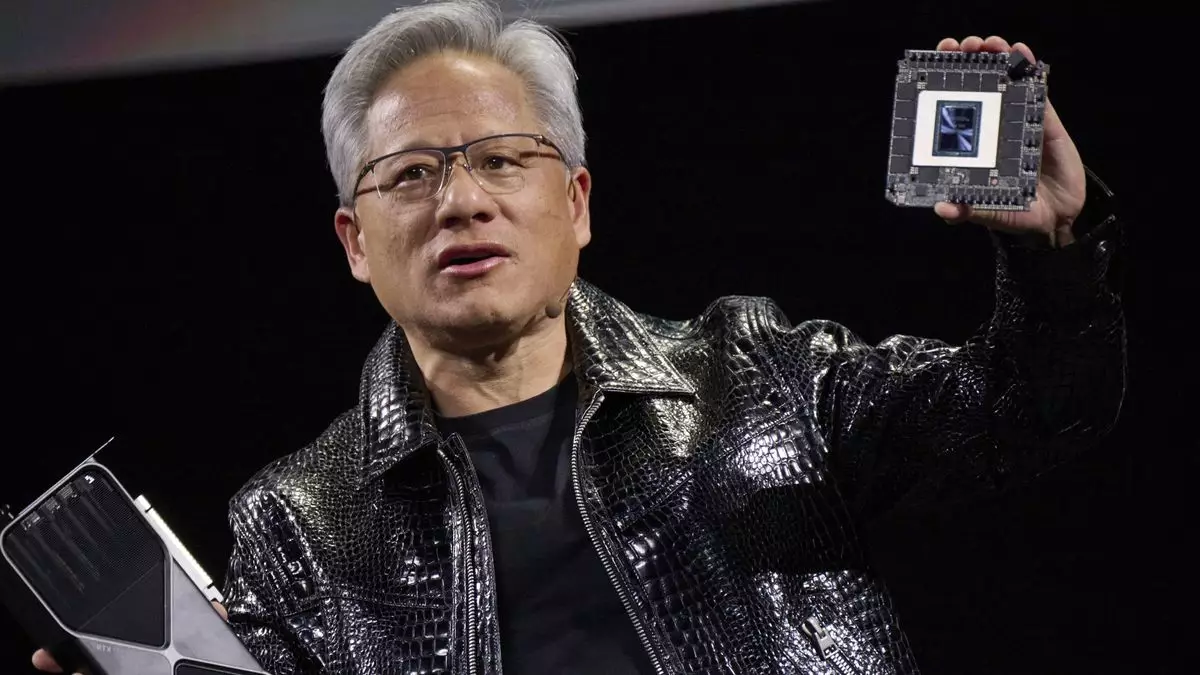Nvidia has long been a key player in the graphics processing unit (GPU) market, particularly as demand has surged thanks to the rise of artificial intelligence (AI) and gaming technologies. However, recent reports indicate that the situation surrounding Nvidia’s latest GPU offerings, particularly the Blackwell series, is fraught with complications that could have broader implications for its flagship RTX 50 gaming family. While major tech companies such as Microsoft, Amazon, Google, and Meta are reportedly scaling back their orders for Blackwell chips due to overheating concerns, Nvidia’s forthcoming gaming GPUs remain a topic of scrutiny and speculation.
The issues with Nvidia’s Blackwell GPU series primarily stem from overheating problems and design flaws that have reportedly forced customers to reconsider their purchasing decisions. According to a report from The Information, businesses reliant on AI chips, seeking optimal performance and reliability, have opted to delay or even switch their orders to older models from Nvidia’s Hopper series. The crux of the matter lies in the overheating phenomena, which have reportedly plagued Blackwell units since their early development stages.
Nvidia’s CEO, Jensen Huang, acknowledged back in October that the Blackwell series houses “design flaws” that were leading to significant shipping delays. Distinctly, this admission did not specify overheating directly; instead, it focused on production yields—indicating trouble in producing functional chips from silicon wafers. Such design issues could interact with thermal performance, but there’s a clear ambiguity regarding whether these problems are interconnected or if they arise independently. The industry is left piecing together the narrative from the varying reports, making the situation increasingly perplexing.
Despite the disruptions faced by Nvidia’s Blackwell line, analysts remain cautiously optimistic about the potential of the upcoming RTX 50 family. These new chips are also built on the Blackwell architecture but differ significantly in design and intended usage. Unlike the AI-focused Blackwell GPUs, the RTX 50 series is aimed at gaming, which necessitates a different approach to functionality, efficiency, and thermal management.
The different software workloads associated with gaming, when compared to the training and inference tasks of AI models, suggest that overheating issues linked specifically to Blackwell might not necessarily coalesce into problems for gaming GPUs. Each line serves distinct functions and manages thermal output under various conditions, which may mitigate the perceived risks rooted in the Blackwell series.
Customer reactions within the tech sector highlight how cooling problems and order reductions can impact confidence in a brand, especially in a fiercely competitive market. Nvidia’s challenges with the Blackwell GPU series naturally elicit questions regarding the robustness of its entire product line. As consumers, gamers, and enterprises evaluate Nvidia’s offerings, the company’s ability to communicate effectively about these issues will dictate its reputation moving forward.
Much rides on Nvidia’s forthcoming RTX 50 series launch; the enthusiasm surrounding new gaming chips heavily depends on whether they can deliver the promised performance without the baggage of overheating troubles. The potential for future innovation hangs in the balance, and a failure to address current concerns adequately could result in lost ground to competitors who are continuously working on enhancing system performances and reliability.
As Nvidia navigates the turbulent waters surrounding its Blackwell GPU series, the gaming market eagerly anticipates the unveiling of the RTX 50 family. The relationship between design flaws and overheating, and how they may or may not translate into issues for gaming GPUs remains unclear. However, there is little doubt that the pressure is on Nvidia to reassess its manufacturing strategies and prioritize reliability to maintain its esteemed status within both the AI and gaming sectors. The lessons learned from these challenges will likely shape the future course of both Nvidia’s product development and broader market dynamics.

